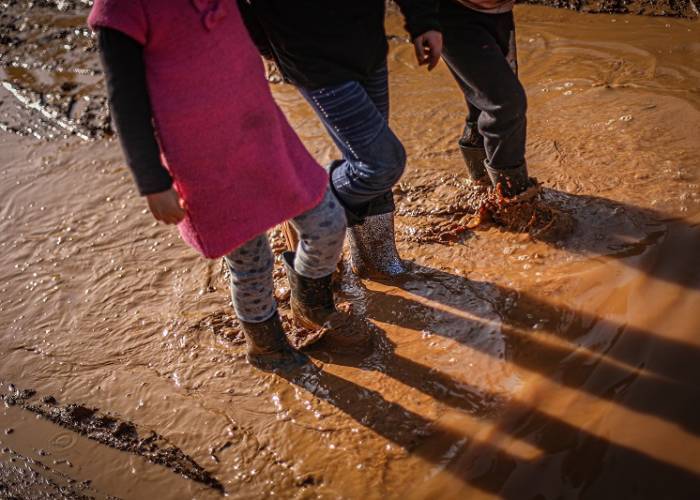The Syria Response Coordinators team shed light on the reality of northern Syria, with the advent of winter, which multiplies the suffering of civilians, especially camp residents.
In a report, the team confirmed the spread of fires within the camps for the displaced as a result of various factors, as fires have affected 148 camps since the beginning of this year, with expectations of an increase in fires in the coming period, especially with the reliance on incorrect heating methods.
The relief group stressed the spread of the phenomenon of open sewage within the camps for the displaced, which increases the suffering of the displaced, as the percentage of the camps with sewage services is only 37% of the total camps, while the completely random camps do not contain this type of projects.
The increase in skin diseases within the camps as a result of various factors, most notably the spread of insects and water use, where more than 22% of the total camps have skin diseases among their residents, in addition to the increase in recorded infections with the Coronavirus and cholera disease as a result of the poor supply of clean water and the high prices of water tankers due to the fuel shortage.
The educational sector is not in better condition, as there are more than 67% of the camps that do not have educational points or schools, where children are forced to travel long distances within different weather factors to obtain education in schools (more than 988 camps do not have educational points), the team said in its report.
The reality of food in the camps for the displaced also suffers from great difficulties, as 81% of the camps face a food security crisis as a result of the weak humanitarian response within this sector, while 93% of the camps face the bread crisis, its high prices, and the limited projects of organizations to secure bread.” subsidized or free for the displaced.
He also stressed the poor internal roads within the camps for the displaced, where more than 77% of the camps’ roads are unpaved, while the roads of the random camps pose the biggest challenge at present as they are dirt and not suitable for the movement of vehicles, and bad roads are one of the main causes of accidents inside the camps. The percentage increased from the previous period, after the first rains of this year, when major defects appeared in the paving and clearing of roads.
More than 84% of the camps suffer from a lack of mobile clinics and medical points, which increases the difficulties of transporting patients to neighbouring hospitals.
According to the team, the problem of isolating the tents and floors inside the tents of the displaced is also a problem, especially with the end of the life span of most of the camps, which increases the damage of weather factors within the camps, and 63% of the camp lands are considered uninsulated, while the percentage is 93% for isolating the walls and roofs of the tents.
The response team explained that child labour constitutes the biggest concern within the camps for the displaced, as the number of working children in the age group (14-17 years) exceeds 35% of the total children in the camps for the displaced, especially with the high cost of daily living and the resort of displaced persons to child labour to cover their daily needs.
This article was edited by The Syrian Observer. The Syrian Observer has not verified the content of this story. Responsibility for the information and views set out in this article lies entirely with the author.


